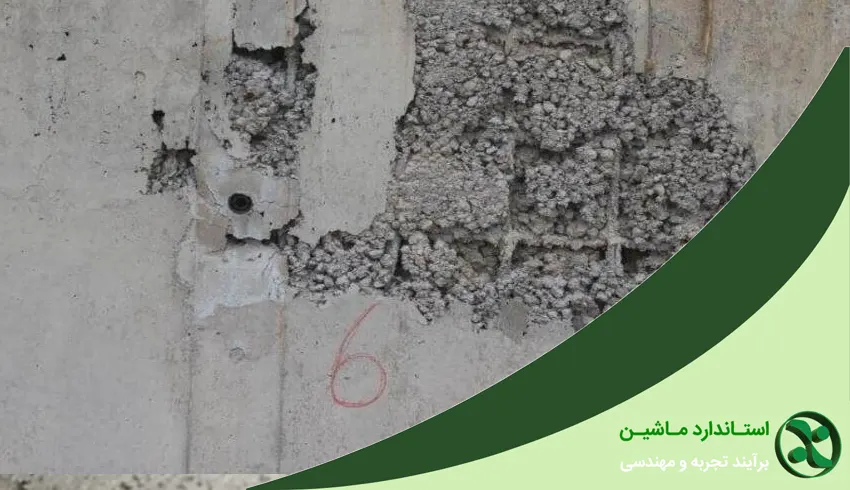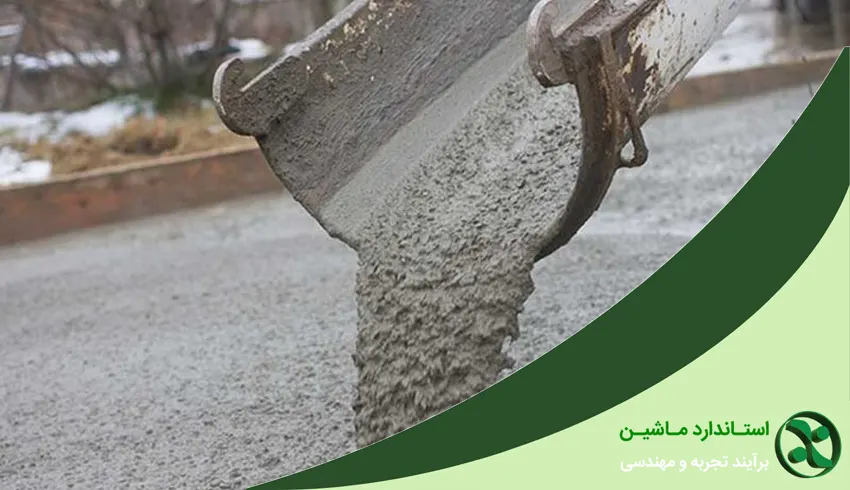Concrete durability is one of the most important quality properties of this construction material, playing a vital role in the service life and stability of structures. Being the most widely used construction material, concrete is exposed to various environmental conditions that can affect its performance and durability. These factors include high humidity, penetration of corrosive ions such as chlorides and sulfates, freeze-thaw cycles, and temperature variations. Over time, these factors may lead to concrete deterioration.
This article aims to study the impact of environmental conditions on concrete durability and present the main tests used to measure concrete permeability and water absorption. Understanding these tests helps engineers and specialists produce high-durability concrete for use in their projects.
Concept of Concrete Durability
Concrete durability refers to the ability of concrete to resist harmful environmental effects without losing its mechanical or physical properties over time. This concept differs from compressive strength, which only reflects the concrete’s ability to withstand mechanical loads, whereas durability includes resistance to chemical, physical, and environmental factors.
Several factors influence concrete durability, including:
-
Quality of raw materials
-
Water-to-cement ratio
-
Type and amount of admixtures
-
Concrete production and placement methods
-
Environmental conditions around the structure
Concrete durability is essential to ensure long service life, reduce maintenance costs, and enhance infrastructure safety.

Environmental Conditions Affecting Concrete Durability
During its operational life, concrete is exposed to various environmental conditions, each affecting its quality and durability. Key factors include:
-
High humidity and water infiltration: High moisture levels and water penetration can reduce cohesion between materials and cause corrosion of embedded steel reinforcement.
-
Corrosive ions (chlorides and sulfates): Chlorides, often from de-icing salts or seawater, lead to steel reinforcement corrosion. Sulfates from soil or polluted water cause cement compound degradation.
-
Freeze-thaw cycles: In cold regions, water inside concrete freezes and expands, leading to cracking and structural deterioration.
-
Severe temperature changes: Large temperature fluctuations create thermal stresses within concrete that can cause cracks.
Understanding these conditions helps engineers choose the appropriate concrete type and protective measures to enhance durability.
Permeability in Concrete
Permeability refers to the ability of liquids, gases, and ions to penetrate the concrete structure. It is a critical factor in determining concrete durability, as higher permeability allows harmful substances to penetrate more easily and cause deterioration.
Types of permeability include:
-
Water permeability: Leads to weathering, steel reinforcement corrosion, and cement compound degradation.
-
Gas permeability: Corrosive gases such as carbon dioxide lead to carbonation, reducing alkalinity and causing steel corrosion.
-
Ion permeability: Chlorides and sulfates from aggressive environments contribute to steel corrosion and structural deterioration.
Permeability is influenced by several factors, including water-to-cement ratio, porosity, type of cement and admixtures, and construction methods. Controlling permeability through proper mix design and supplementary materials can significantly increase the lifespan of structures.
Tests to Measure Permeability and Water Absorption
Several tests are used to evaluate concrete durability and its resistance to environmental conditions:
-
Water absorption test
Measures the amount of water absorbed by a concrete specimen over a specific period. High absorption indicates higher porosity and permeability. The test usually involves drying the specimen, weighing it, immersing it in water, and weighing it again.-
Standards: ASTM C642, ISIRI 2349
-
-
Chloride ion penetration test
Measures how far chloride ions penetrate into concrete, critical for assessing reinforcement corrosion resistance. A common method is the Rapid Chloride Permeability Test (RCPT) according to ASTM C1202. -
Water permeability under pressure test
Water is applied under a certain pressure to measure penetration, reflecting concrete’s resistance to permeability under pressure. -
Gas and vapor permeability tests
Measure the penetration of gases and water vapor into concrete, helping evaluate carbonation resistance and other destructive processes.
Interpreting Test Results
Accurate interpretation of test results is essential to evaluate concrete quality and durability:
-
Water absorption values: Low absorption indicates lower porosity and permeability, thus higher durability.
-
Electrical resistance (RCPT): High values indicate lower chloride permeability and better durability.
-
Water permeability under pressure: Low permeability indicates better resistance in wet environments.
-
Comparison with standards: Results should be compared with national and international standards (ASTM, ISIRI).
-
Relation between permeability and damage: High permeability increases the risk of steel corrosion, reduced structural strength, and shorter service life.
Methods to Improve Concrete Durability Against Water and Ion Penetration
-
Use of supplementary materials and additives: Silica fume, ground granulated blast furnace slag (GGBS), pozzolans, and water-repellent admixtures.
-
Control of water-to-cement ratio: Lower ratio reduces voids and increases concrete resistance.
-
Modern concrete technologies: Self-compacting concrete, optimized gradation concrete, high-performance concrete.
-
Surface protection: Waterproof coatings, penetrating sealers, resins, and special paints.
-
Proper execution and quality control: Adequate compaction, crack prevention, and proper curing.

Practical Applications and Project Examples
-
Coastal projects and ports: Exposed to seawater and chlorides causing corrosion; durability improved using pozzolanic additives and low-permeability mixes.
-
Underground structures and tunnels: Water infiltration and sulfates from soil are threats; low water-cement concrete and waterproof coatings were used.
-
Buildings in cold climates: Freeze-thaw cycles addressed with water-resistant concrete and precise permeability testing.
-
Quality control: Major projects implemented regular water absorption and permeability tests as part of quality assurance programs.
Conclusion
Concrete durability is a crucial factor determining the lifespan and resistance of structures to environmental conditions. Permeability and water absorption are primary indicators of durability and can be measured through standard tests.
Environmental factors such as high humidity, corrosive ions, freeze-thaw cycles, and temperature fluctuations may deteriorate concrete if permeability is not minimized through proper mix design, use of additives, and protective measures.
Tests such as water absorption, chloride ion penetration, water permeability under pressure, and gas permeability are essential for quality evaluation. Accurate interpretation of results enables engineers to make informed decisions, enhancing structural safety and reducing long-term maintenance costs.

